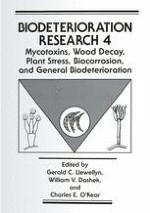This volume, unlike the three preceding it, represents the collected papers from an experiment with an "electronic symposium". Co-participators in this symposium included The George Washington University, The Smithsonian Institution, Clark Atlanta University, the Agriculture Research Service of the United States Department of Agriculture, The University of Georgia, Morris Brown College, Spellman College, Morehouse College, North Carolina State University at Raleigh, The United States Food and Drug Administration, and the Forest Service of the United States Department of Agriculture among others. This unusual "electronic symposium" concept was developed by members of the Program, Planning and Organizing Committee as an alternative to the more costly convention-type symposium. As before, leading scientists in specific topic areas were invited to participate. Topic Session chairpersons were encouraged to arrange their own method of communication by telephone, electronic mail, or conference call, and report their findings back to the symposium center at The George Washington University. Additional papers were accepted from individuals and laboratories who are actively involved in relevant areas of research and study. Participation was also arranged for internationally established scientists. International authors are represented herein from Nigeria, Italy, Spain, Brazil and Argentina. Our goal was to present a research composite volume that reflected current developments, informed reviews, new and recently developing areas of the present state of knowledge as it relates to these proceeding topics. All of the reports included in this volume have undergone scientific, technical and editorial peer review.
